You know the story: rising, innovative post-punk band from Manchester on the brink of conquering North America lose singer to suicide, cancel North American tour... but the band triumph over tragedy and decide to keep going, rechristen themselves, nominate guitarist to sing, hire the drummer's girlfriend to play keyboards, and eventually become one of the most important artists of the 1980s. That is the brief summation of New Order's story, which should also include another line about how the 1990s ruined them, and somehow, somehow they managed to survive multiple hiatuses and/or breakups, record some new music and still, after four decades, make their umpteenth comeback (of course, without one co-founding member, bassist Peter Hook, who famously left the band, only to try to play New Order's music with a band that wasn't New Order).
There is a lot that's been written about New Order in the last 35 years. The stories always begin with how they rose from the ashes of Joy Division and proceeded to make history when the odds were completely against them. And then about how they released some of the most groundbreaking singles in the next decade for Tony Wilson's Factory Records, including the best-selling 12-inch single of all time, which was recorded completely by accident and lost the band money with every copy sold. However, where New Order often get overlooked is in their catalogue of studio albums. It's not as if their nine studio albums (10 if you include 2013's Lost Sirens) go completely unnoticed in the annals of music. However, New Order's legacy will probably always be more aligned with an artist like ABBA, than, say U2 or R.E.M., two more accurate New Order contemporaries that were often regarded more for their classic albums than their classic songs.
New Order's output in the 1980s may not receive the same praise, but it is as good as if not better than that of U2 or R.E.M., Depeche Mode or the Smiths. Some may disagree with that statement, but if you hold up the band's five albums, along with their countless singles, the argument is there to be made. The fact that the singles overshadowed the full-lengths, most of which purposely didn't include singles, makes their discography not only a fascinating one, but a plentiful one. The band rode a prolific streak that saw them release 12 non-album singles, on top of five albums in the span of less than six years. That's some Beatles-type magic right there. What makes that accomplishment so impressive is both the quantity and quality of the product they were putting out. Movement, Power, Corruption & Lies, Low-Life, Brotherhood, and Technique are all considered essential albums of their era. Of course, there was a major dip in both quantity and quality as the 1990s arrived, but no one, especially the band members themselves, would ever have imagined that 35 years after forming they'd be releasing a new studio album.
And that's where we are: it's 2015 and New Order — now Bernard Sumner, Stephen Morris, Gillian Gilbert, Phil Cunningham and Tom Chapman — are releasing Music Complete, their 10th album (again, if you're including Lost Sirens), on September 25 via Mute. Like all the best traditions, the album upholds their ability to seamlessly transcend musical boundaries while providing deep emotional connections for the listener. And like all of their releases before them, it features artwork by the inimitable Peter Saville, who, if you ask any fan, was always the original fifth member of New Order.
Essential Albums:
5. Movement
(1981)

"To me, the only bad album we've made is Movement" — Bernard Sumner muttered those words to MOJO back in 2001. And his reaction is understandable. Imagine trying to follow up an album that was deemed an instant classic. Even worse, imagine that album was Joy Division's Closer, the final statement by Ian Curtis before his suicide. That was the impossible task Sumner, Stephen Morris and Peter Hook set out to fulfill when they carried on under the name New Order. The turnaround was a tight one, and just months after Curtis' demise, they began working on Movement with Factory mainstay Martin Hannett, producing for what would be his final album for the band. Sumner was promoted to lead vocalist, basically by default, although Hooky sings "Dreams Never End" and "Doubts Even Here." Neither appeared ready for the job, and you can hear the hesitation in both voices. And so, amongst its icy, steel compositions that sounded like what was left of Joy Division's unreleased song stash (all of the songs were New Order originals), Movement is, in many respects, an edgy, fragile mess. But there is plenty of beauty and hope peeking out from under these confused, precarious tracks. In the liner notes from Rhino's 2008 reissue (which contains a bonus disc of singles, remixes and edits), Morris admits their uncertainty, writing, "Martin [Hannett] knew it had to be different, and we knew it had to be different, but none of us knew what that different was." A track like "ICB," with its zooming laser synths and chugging rhythm still feels unfinished, but exhibits the way they were learning how to become a band as they wrote from instinct. Sure there were no choruses from this band that wrote so many memorable ones, but Movement is special because it is a snapshot of one band rising from another's ashes.
4. Power, Corruption & Lies
(1983)
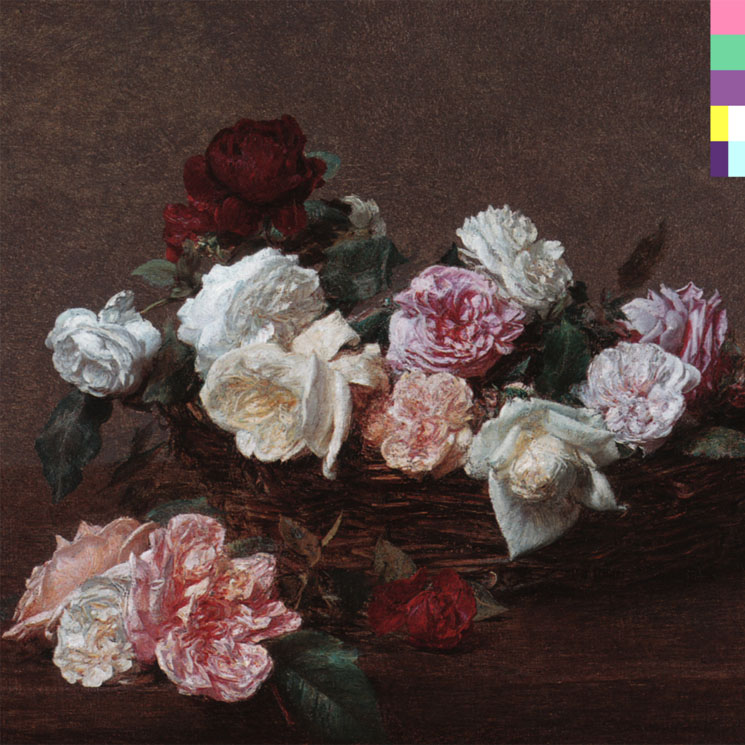
"Movement sounded like Joy Division, but Power, Corruption & Lies is the first New Order record" — those are the words of Peter Hook. And he's right. New Order's second album is often regarded as their first for a reason. Aside from the band's own contempt for Movement, that album felt as much of a Joy Division outro than a New Order intro. And the leap from Movement to Power, Corruption & Lies is a significant one. Although the evolution had already been recognized via their intermediate singles — "Everything's Gone Green," "Temptation" and "Blue Monday" — New Order were still determined to make a statement with their sophomore effort. Says Sumner in the album reissue's liner notes, "We'd got over Ian, we'd started using machines, and life was good again." Self-produced and recorded at Pink Floyd's Britannia Row Studios, fuelled by LSD and inspired by NYC discotheques, New Order were heavily experimenting with new, unfamiliar equipment they'd either just purchased or built themselves. It worked making "Blue Monday," which became the best-selling 12-inch single of all time. And of course, they had the sheer audacity to leave their hit off the album. It didn't matter, though. Instead, they had the frolicking rhythms and Sumner's faux-naif vocals on "The Age of Consent," the chaotic pulsations of "Ultraviolence," the exquisite beauty of the Kraftwerk-influenced "Your Silent Face," and what sounded like a prototype for "Blue Monday," the wonderfully unhinged "586." With Power, Corruption & Lies, New Order were finally able to leave Joy Division behind them, and make an album that was so good it didn't even need their massive hit to succeed.
3. Low-Life
(1985)
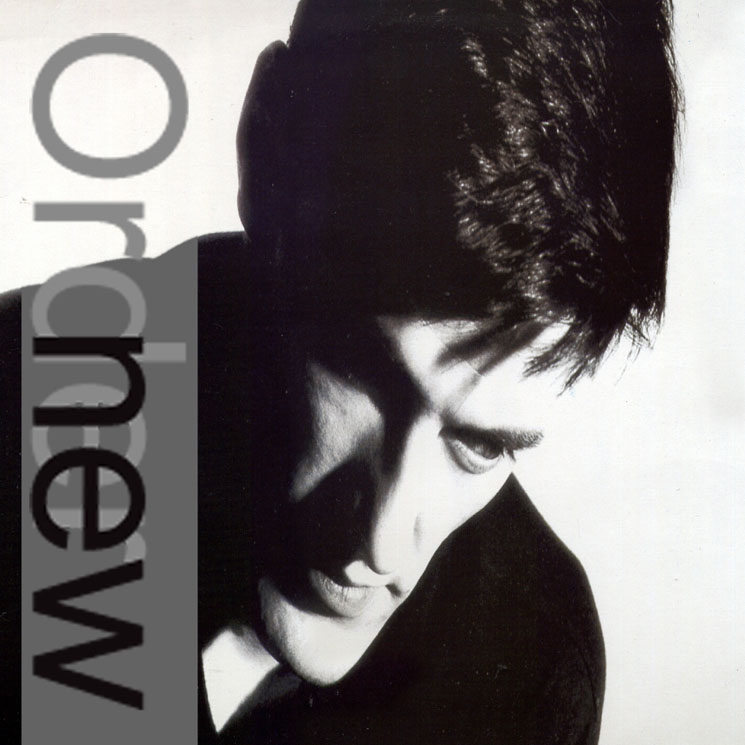
On their third full-length, New Order moved past the development stages of Movement and Power, Corruption & Lies to record their first fully formed album. Following the Top 20 success of in-between singles "Confusion" and "Thieves Like Us," they were still very much exploring what they could do with their gear. But more than anything, Low-Life is the moment where New Order solidified themselves as a band centered on making dance music as much as pop and rock with a goal in mind: "Low-Life was the going-to-be-big-in-America record," admitted Morris in the liner notes to the album's 2008 Rhino reissue. Recorded at Pink Floyd's Britannia Row Studios, it was the band's first major label release in North America. Of course, Low-Life earned sell-out accusations after they, for the first time ever, chose to include a single on the album. But "The Perfect Kiss" and its irresistible singalong chorus merely hinted at what was in store for the album. Basically Low-Life offered a bit of everything: a full-on club banger in the disco-draped "Sub-Culture," the quixotic indie pop of "Love Vigilantes," and, kicking off side B, the funereal glow of "Elegia," a supposed Ian Curtis tribute that is nobly offset by twinkling synths and one of Hooky's greatest bass lines. And the album offered it with a bit of grit in the production, which was important to keep the "dirtiness" in there. Though you can still hear traces of their past in the post-punk thrill of "Sunrise," Low-Life is often considered the album where New Order truly left Joy Division behind them. Not to mention the album where Sumner sang about having a wank ("Tonight I should have stayed at home / Playing with my pleasure zone").
2. Technique
(1989)
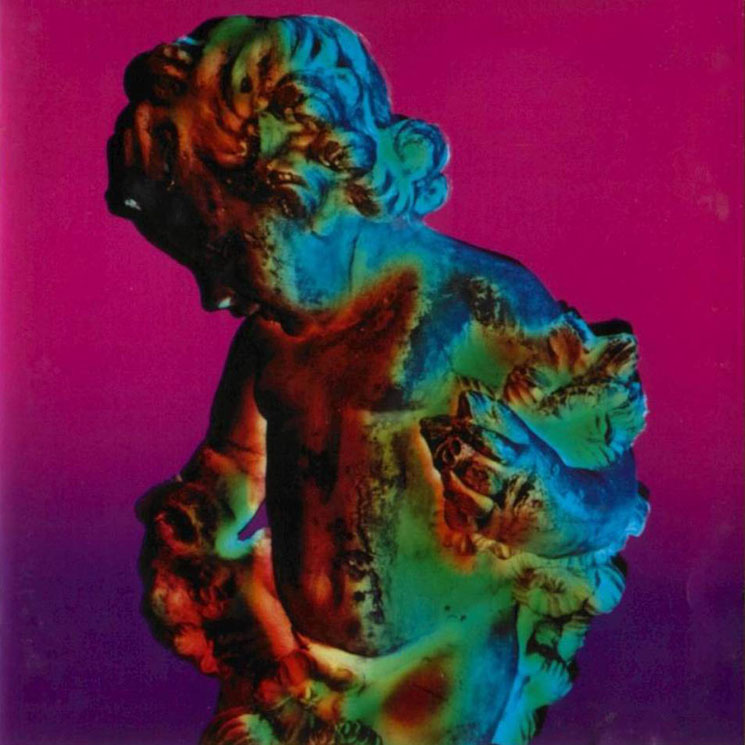
Despite being touted as their "dance record," New Order's fifth full-length is unique to their catalogue, in that it feels much more inter-connected and fluid than any of their other releases. The original idea was to record Technique at Mediterranean Studios in Ibiza, which was at the time a hotbed for acid house and ecstasy. Fully aware of Ibiza's reputation, as well as the drugs that were running rampant, the band dove headfirst into the scene, partying for four whole months, or simply "getting off our faces," as Sumner once put it. Although they laid some tracks down, most of their time was devoted to drugs, swimming and, strangely, crashing cars. It's no wonder Brian Eno, who was originally supposed to produce the album, reportedly backed out after hearing all the stories about their drug intake. What's remarkable is how New Order managed to transport the Spanish isle's euphoric, sun-laden spirit to Peter Gabriel's Real World Studios in Bath without all of the debauchery. The album felt right at home inside the band's Haçienda club, but Technique is still very much a rock album, something Hooky was adamant about maintaining. According to Morris, their goal was to make "the kind of thing that comes with sunbathing at four in the morning before you go to bed," and Technique accomplished that. The lackadaisical, John Denver-biting bliss of "Run," the spinning rhythms and fervent energy of "Round and Round" and "Fine Time," and the troubled (acidic) paradise that is "Vanishing Point" are all cut from the same wistfully danceable cloth. That it became their first ever No. 1 album in the UK charts was just icing on top. If there was ever an argument needed to make a sequel to Control, this album is all any producer would need.
1. Substance
(1987)
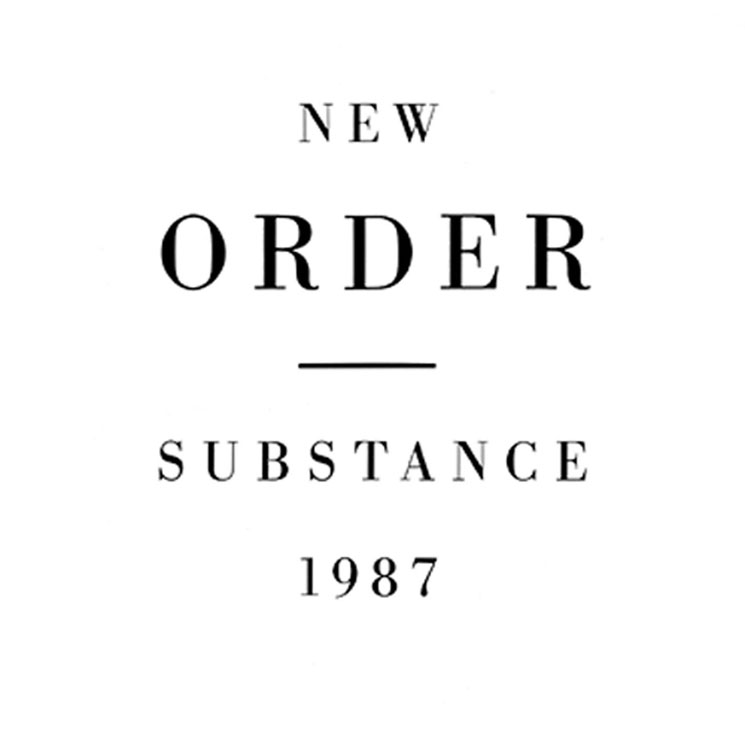
Seeing as Substance is a compilation of the band's 12-inch singles and not a proper studio album, it shouldn't really count. But New Order have always been praised for their singles over their albums, and each member would be the first to agree with Substance as their greatest work. Why Substance should be an exception to the rule is because history has treated it more like an album, not to mention because it also arrived only seven years after the band formed (a complete greatest hits, it is not). A collection for fans that didn't bother with the singles, the comp chronologically lays out New Order's evolution: from the post-punk band that reworked Joy Division's gothic rock anthem "Ceremony" to the iconic synth-pop of "Bizarre Love Triangle." Strangely, both "Temptation" and "Confusion" were re-recorded for Substance, and while you could argue that the nervy 7-inch mix of the former is the superior version, the bolstered 1987 mix of "Confusion" benefits from the redo. Released as different versions across its multiple formats (CD, vinyl, cassette), the double CD is the essential version. The second disc, essentially some leftovers and remixes, makes it a bit of a gruelling effort, but pivotal tracks like "In A Lonely Place," "Procession" and the B-side-cum-A-side "1963" all make it an invaluable companion. Not to devalue their full-lengths, but no New Order album to date has had the — pardon the pun, but — substance to match their seminal 1987 collection. Substance is basically the musical equivalent to the Justice League or the Avengers: an assemblage of hits teaming up to become even more powerful.
What to Avoid:
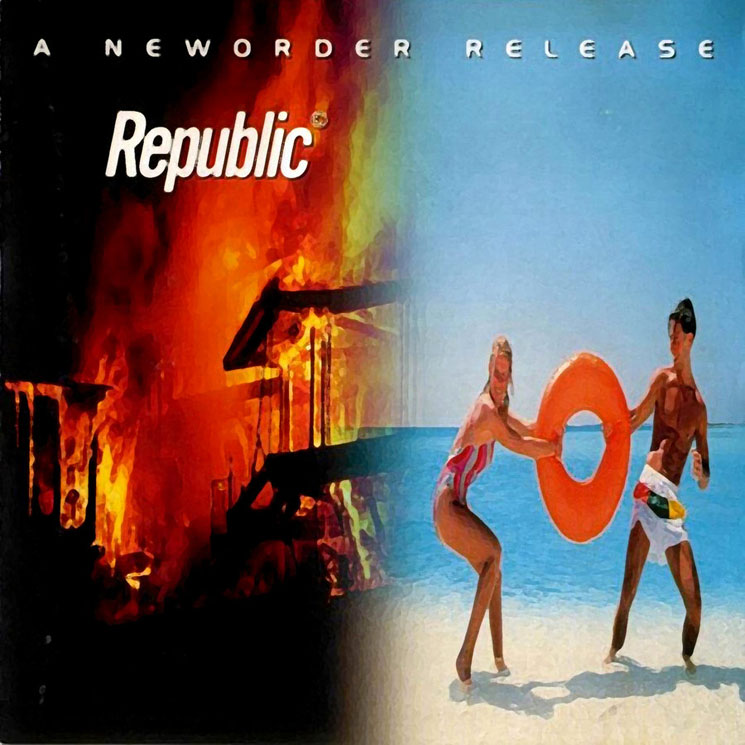
There is no shortage of New Order compilations out there. Stephen Morris even said so himself. In a recent interview with Exclaim!, promoting the band's 10th album, Music Complete, Morris had this so say about the title: "We never thought that it sounds like another New Order compilation album, which I think the world's got enough of, quite honestly." Obviously, Substance is the one true essential comp. It was the first, but far from the last. And there will probably be more to come, but at press time, New Order has seven singles or greatest-hits compilations, as well as three live albums and three albums of different radio sessions. Almost all of them are superfluous. The worst offender being 2002's Retro, a box set with four themed discs, each curated by a friend of the band, including Primal Scream's Bobby Gillespie hand-picking a selection of live tracks. Needless to say, fans saw right through Retro and accused London Records of a quick cash grab.
New Order would describe their time recording 1993's Republic as hell. Unfortunately, what they ended up with didn't exactly make the hellish experience all that worth it. Relations were at an all-time low (at least then), and part of the problem was that their long-standing label, Factory Records, declared bankruptcy and ceased operations in November 1992. Although it was New Order's success that kept the label afloat for some years, it was also their sixth album that helped sink Factory: Republic cost a reported £400,000 to make. Sure it debuted at No. 1 (their last album to do so) and earned the band a Mercury Prize nomination, but there's no denying how front-loaded this album is. "Regret" is one of the band's best songs, and "Ruined in a Day" and "World" were both underrated singles, but no matter how nostalgic you feel about it, the rest of Republic is mostly avoidable.
The same can be said for both 2005's Waiting for the Sirens' Call and its long-delayed 2013 companion, Lost Sirens. Recorded without Gilbert, who left to care for her youngest daughter, there is some kind of void at work with ex-Marion guitarist Phil Cunningham in her place. Neither album is particularly awful, but New Order just appeared to be uninspired and forcing something out of them, which came as a surprise considering A-list producers like John Leckie, Stephen Street and Stuart Price were at the helm. Much like its superior predecessor, 2001's comeback album, Get Ready, Waiting for the Sirens' Call relies far too much on guitars taking the lead, a regret the band has admitted to in recent interviews. This wasn't the sound of a band that made all of that innovative electronic pop music in the 1980s, but one last gasp before Hooky (presumptuously) called it a day for New Order in 2007.
Further Listening:
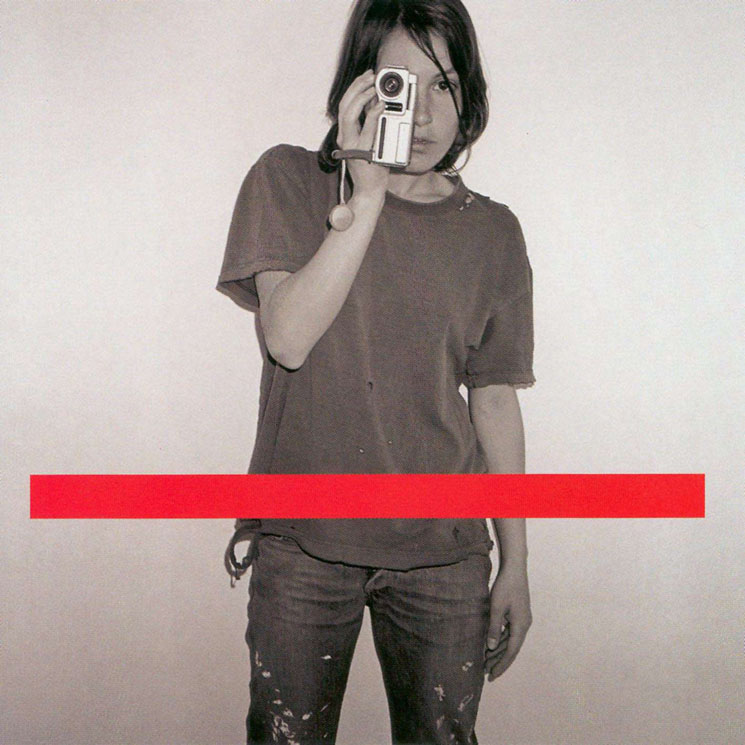
As mentioned earlier, there have been way too many New Order compilations issued in the band's 35 years. Substance is far and away the best, but if you're in the market for one that goes beyond 1987 than your best bet is 2005's Singles. A two-disc collection of every commercial single, from "Ceremony" (the original version, no less) to Waiting for the Sirens' Call's "Turn," Singles is the most comprehensive set. It also includes some interesting selections, like the 7-inch (and best) versions of "Temptation" and "Everything's Gone Green," and the '94 mix of "1963." If possible, track down the Japanese edition featuring Richard X's remix of "Bizarre Love Triangle." It's worth the extra money.
Brotherhood is the only New Order album from the 1980s to not be deemed "essential" here, but that is by no means a reason for it to go unheard. Yes, it is their weakest effort of the decade, and that probably has to do with splitting the album's sides into a "rock" one (A) and a "dance" one (B). It no doubt left the album feeling a bit disjointed, but it is a unique entry in the band's canon. It was a peculiar experiment from a band that was racking up club hits with their non-album 12-inch releases. Of course, Brotherhood is most notable for featuring New Order's biggest commercial hit, "Bizarre Love Triangle," which wasn't exactly a chart hit, but it appeared in numerous films and became one of the most recognizable hits of the "Retro '80s" craze that struck in the late 1990s. It's might be a little uneven, but there are some unsung gems on Brotherhood, like the urgent poetry of "Weirdo" and the amorously piss-taking "Every Little Counts."
After Republic there was no reason to expect another New Order album, but Get Ready seemed to quench the thirst when it arrived in 2001. It's tough to say in hindsight whether it truly lived up to its massive hype, but at least they sounded full of life and motivated, compared to what came before and after. The clear sonic overload by the guitars seemed apropos at the time, considering the press-driven rock revival that year, and they sound great on the strident "Slow Jam" and the Bobby Gillespie-featuring "Rock the Shack" (which is basically just a Primal Scream track). And yeah, lead single "Crystal" was a pretty fantastic way of announcing their return.
There is a lot that's been written about New Order in the last 35 years. The stories always begin with how they rose from the ashes of Joy Division and proceeded to make history when the odds were completely against them. And then about how they released some of the most groundbreaking singles in the next decade for Tony Wilson's Factory Records, including the best-selling 12-inch single of all time, which was recorded completely by accident and lost the band money with every copy sold. However, where New Order often get overlooked is in their catalogue of studio albums. It's not as if their nine studio albums (10 if you include 2013's Lost Sirens) go completely unnoticed in the annals of music. However, New Order's legacy will probably always be more aligned with an artist like ABBA, than, say U2 or R.E.M., two more accurate New Order contemporaries that were often regarded more for their classic albums than their classic songs.
New Order's output in the 1980s may not receive the same praise, but it is as good as if not better than that of U2 or R.E.M., Depeche Mode or the Smiths. Some may disagree with that statement, but if you hold up the band's five albums, along with their countless singles, the argument is there to be made. The fact that the singles overshadowed the full-lengths, most of which purposely didn't include singles, makes their discography not only a fascinating one, but a plentiful one. The band rode a prolific streak that saw them release 12 non-album singles, on top of five albums in the span of less than six years. That's some Beatles-type magic right there. What makes that accomplishment so impressive is both the quantity and quality of the product they were putting out. Movement, Power, Corruption & Lies, Low-Life, Brotherhood, and Technique are all considered essential albums of their era. Of course, there was a major dip in both quantity and quality as the 1990s arrived, but no one, especially the band members themselves, would ever have imagined that 35 years after forming they'd be releasing a new studio album.
And that's where we are: it's 2015 and New Order — now Bernard Sumner, Stephen Morris, Gillian Gilbert, Phil Cunningham and Tom Chapman — are releasing Music Complete, their 10th album (again, if you're including Lost Sirens), on September 25 via Mute. Like all the best traditions, the album upholds their ability to seamlessly transcend musical boundaries while providing deep emotional connections for the listener. And like all of their releases before them, it features artwork by the inimitable Peter Saville, who, if you ask any fan, was always the original fifth member of New Order.
Essential Albums:
5. Movement
(1981)

"To me, the only bad album we've made is Movement" — Bernard Sumner muttered those words to MOJO back in 2001. And his reaction is understandable. Imagine trying to follow up an album that was deemed an instant classic. Even worse, imagine that album was Joy Division's Closer, the final statement by Ian Curtis before his suicide. That was the impossible task Sumner, Stephen Morris and Peter Hook set out to fulfill when they carried on under the name New Order. The turnaround was a tight one, and just months after Curtis' demise, they began working on Movement with Factory mainstay Martin Hannett, producing for what would be his final album for the band. Sumner was promoted to lead vocalist, basically by default, although Hooky sings "Dreams Never End" and "Doubts Even Here." Neither appeared ready for the job, and you can hear the hesitation in both voices. And so, amongst its icy, steel compositions that sounded like what was left of Joy Division's unreleased song stash (all of the songs were New Order originals), Movement is, in many respects, an edgy, fragile mess. But there is plenty of beauty and hope peeking out from under these confused, precarious tracks. In the liner notes from Rhino's 2008 reissue (which contains a bonus disc of singles, remixes and edits), Morris admits their uncertainty, writing, "Martin [Hannett] knew it had to be different, and we knew it had to be different, but none of us knew what that different was." A track like "ICB," with its zooming laser synths and chugging rhythm still feels unfinished, but exhibits the way they were learning how to become a band as they wrote from instinct. Sure there were no choruses from this band that wrote so many memorable ones, but Movement is special because it is a snapshot of one band rising from another's ashes.
4. Power, Corruption & Lies
(1983)

"Movement sounded like Joy Division, but Power, Corruption & Lies is the first New Order record" — those are the words of Peter Hook. And he's right. New Order's second album is often regarded as their first for a reason. Aside from the band's own contempt for Movement, that album felt as much of a Joy Division outro than a New Order intro. And the leap from Movement to Power, Corruption & Lies is a significant one. Although the evolution had already been recognized via their intermediate singles — "Everything's Gone Green," "Temptation" and "Blue Monday" — New Order were still determined to make a statement with their sophomore effort. Says Sumner in the album reissue's liner notes, "We'd got over Ian, we'd started using machines, and life was good again." Self-produced and recorded at Pink Floyd's Britannia Row Studios, fuelled by LSD and inspired by NYC discotheques, New Order were heavily experimenting with new, unfamiliar equipment they'd either just purchased or built themselves. It worked making "Blue Monday," which became the best-selling 12-inch single of all time. And of course, they had the sheer audacity to leave their hit off the album. It didn't matter, though. Instead, they had the frolicking rhythms and Sumner's faux-naif vocals on "The Age of Consent," the chaotic pulsations of "Ultraviolence," the exquisite beauty of the Kraftwerk-influenced "Your Silent Face," and what sounded like a prototype for "Blue Monday," the wonderfully unhinged "586." With Power, Corruption & Lies, New Order were finally able to leave Joy Division behind them, and make an album that was so good it didn't even need their massive hit to succeed.
3. Low-Life
(1985)

On their third full-length, New Order moved past the development stages of Movement and Power, Corruption & Lies to record their first fully formed album. Following the Top 20 success of in-between singles "Confusion" and "Thieves Like Us," they were still very much exploring what they could do with their gear. But more than anything, Low-Life is the moment where New Order solidified themselves as a band centered on making dance music as much as pop and rock with a goal in mind: "Low-Life was the going-to-be-big-in-America record," admitted Morris in the liner notes to the album's 2008 Rhino reissue. Recorded at Pink Floyd's Britannia Row Studios, it was the band's first major label release in North America. Of course, Low-Life earned sell-out accusations after they, for the first time ever, chose to include a single on the album. But "The Perfect Kiss" and its irresistible singalong chorus merely hinted at what was in store for the album. Basically Low-Life offered a bit of everything: a full-on club banger in the disco-draped "Sub-Culture," the quixotic indie pop of "Love Vigilantes," and, kicking off side B, the funereal glow of "Elegia," a supposed Ian Curtis tribute that is nobly offset by twinkling synths and one of Hooky's greatest bass lines. And the album offered it with a bit of grit in the production, which was important to keep the "dirtiness" in there. Though you can still hear traces of their past in the post-punk thrill of "Sunrise," Low-Life is often considered the album where New Order truly left Joy Division behind them. Not to mention the album where Sumner sang about having a wank ("Tonight I should have stayed at home / Playing with my pleasure zone").
2. Technique
(1989)

Despite being touted as their "dance record," New Order's fifth full-length is unique to their catalogue, in that it feels much more inter-connected and fluid than any of their other releases. The original idea was to record Technique at Mediterranean Studios in Ibiza, which was at the time a hotbed for acid house and ecstasy. Fully aware of Ibiza's reputation, as well as the drugs that were running rampant, the band dove headfirst into the scene, partying for four whole months, or simply "getting off our faces," as Sumner once put it. Although they laid some tracks down, most of their time was devoted to drugs, swimming and, strangely, crashing cars. It's no wonder Brian Eno, who was originally supposed to produce the album, reportedly backed out after hearing all the stories about their drug intake. What's remarkable is how New Order managed to transport the Spanish isle's euphoric, sun-laden spirit to Peter Gabriel's Real World Studios in Bath without all of the debauchery. The album felt right at home inside the band's Haçienda club, but Technique is still very much a rock album, something Hooky was adamant about maintaining. According to Morris, their goal was to make "the kind of thing that comes with sunbathing at four in the morning before you go to bed," and Technique accomplished that. The lackadaisical, John Denver-biting bliss of "Run," the spinning rhythms and fervent energy of "Round and Round" and "Fine Time," and the troubled (acidic) paradise that is "Vanishing Point" are all cut from the same wistfully danceable cloth. That it became their first ever No. 1 album in the UK charts was just icing on top. If there was ever an argument needed to make a sequel to Control, this album is all any producer would need.
1. Substance
(1987)

Seeing as Substance is a compilation of the band's 12-inch singles and not a proper studio album, it shouldn't really count. But New Order have always been praised for their singles over their albums, and each member would be the first to agree with Substance as their greatest work. Why Substance should be an exception to the rule is because history has treated it more like an album, not to mention because it also arrived only seven years after the band formed (a complete greatest hits, it is not). A collection for fans that didn't bother with the singles, the comp chronologically lays out New Order's evolution: from the post-punk band that reworked Joy Division's gothic rock anthem "Ceremony" to the iconic synth-pop of "Bizarre Love Triangle." Strangely, both "Temptation" and "Confusion" were re-recorded for Substance, and while you could argue that the nervy 7-inch mix of the former is the superior version, the bolstered 1987 mix of "Confusion" benefits from the redo. Released as different versions across its multiple formats (CD, vinyl, cassette), the double CD is the essential version. The second disc, essentially some leftovers and remixes, makes it a bit of a gruelling effort, but pivotal tracks like "In A Lonely Place," "Procession" and the B-side-cum-A-side "1963" all make it an invaluable companion. Not to devalue their full-lengths, but no New Order album to date has had the — pardon the pun, but — substance to match their seminal 1987 collection. Substance is basically the musical equivalent to the Justice League or the Avengers: an assemblage of hits teaming up to become even more powerful.
What to Avoid:

There is no shortage of New Order compilations out there. Stephen Morris even said so himself. In a recent interview with Exclaim!, promoting the band's 10th album, Music Complete, Morris had this so say about the title: "We never thought that it sounds like another New Order compilation album, which I think the world's got enough of, quite honestly." Obviously, Substance is the one true essential comp. It was the first, but far from the last. And there will probably be more to come, but at press time, New Order has seven singles or greatest-hits compilations, as well as three live albums and three albums of different radio sessions. Almost all of them are superfluous. The worst offender being 2002's Retro, a box set with four themed discs, each curated by a friend of the band, including Primal Scream's Bobby Gillespie hand-picking a selection of live tracks. Needless to say, fans saw right through Retro and accused London Records of a quick cash grab.
New Order would describe their time recording 1993's Republic as hell. Unfortunately, what they ended up with didn't exactly make the hellish experience all that worth it. Relations were at an all-time low (at least then), and part of the problem was that their long-standing label, Factory Records, declared bankruptcy and ceased operations in November 1992. Although it was New Order's success that kept the label afloat for some years, it was also their sixth album that helped sink Factory: Republic cost a reported £400,000 to make. Sure it debuted at No. 1 (their last album to do so) and earned the band a Mercury Prize nomination, but there's no denying how front-loaded this album is. "Regret" is one of the band's best songs, and "Ruined in a Day" and "World" were both underrated singles, but no matter how nostalgic you feel about it, the rest of Republic is mostly avoidable.
The same can be said for both 2005's Waiting for the Sirens' Call and its long-delayed 2013 companion, Lost Sirens. Recorded without Gilbert, who left to care for her youngest daughter, there is some kind of void at work with ex-Marion guitarist Phil Cunningham in her place. Neither album is particularly awful, but New Order just appeared to be uninspired and forcing something out of them, which came as a surprise considering A-list producers like John Leckie, Stephen Street and Stuart Price were at the helm. Much like its superior predecessor, 2001's comeback album, Get Ready, Waiting for the Sirens' Call relies far too much on guitars taking the lead, a regret the band has admitted to in recent interviews. This wasn't the sound of a band that made all of that innovative electronic pop music in the 1980s, but one last gasp before Hooky (presumptuously) called it a day for New Order in 2007.
Further Listening:

As mentioned earlier, there have been way too many New Order compilations issued in the band's 35 years. Substance is far and away the best, but if you're in the market for one that goes beyond 1987 than your best bet is 2005's Singles. A two-disc collection of every commercial single, from "Ceremony" (the original version, no less) to Waiting for the Sirens' Call's "Turn," Singles is the most comprehensive set. It also includes some interesting selections, like the 7-inch (and best) versions of "Temptation" and "Everything's Gone Green," and the '94 mix of "1963." If possible, track down the Japanese edition featuring Richard X's remix of "Bizarre Love Triangle." It's worth the extra money.
Brotherhood is the only New Order album from the 1980s to not be deemed "essential" here, but that is by no means a reason for it to go unheard. Yes, it is their weakest effort of the decade, and that probably has to do with splitting the album's sides into a "rock" one (A) and a "dance" one (B). It no doubt left the album feeling a bit disjointed, but it is a unique entry in the band's canon. It was a peculiar experiment from a band that was racking up club hits with their non-album 12-inch releases. Of course, Brotherhood is most notable for featuring New Order's biggest commercial hit, "Bizarre Love Triangle," which wasn't exactly a chart hit, but it appeared in numerous films and became one of the most recognizable hits of the "Retro '80s" craze that struck in the late 1990s. It's might be a little uneven, but there are some unsung gems on Brotherhood, like the urgent poetry of "Weirdo" and the amorously piss-taking "Every Little Counts."
After Republic there was no reason to expect another New Order album, but Get Ready seemed to quench the thirst when it arrived in 2001. It's tough to say in hindsight whether it truly lived up to its massive hype, but at least they sounded full of life and motivated, compared to what came before and after. The clear sonic overload by the guitars seemed apropos at the time, considering the press-driven rock revival that year, and they sound great on the strident "Slow Jam" and the Bobby Gillespie-featuring "Rock the Shack" (which is basically just a Primal Scream track). And yeah, lead single "Crystal" was a pretty fantastic way of announcing their return.
